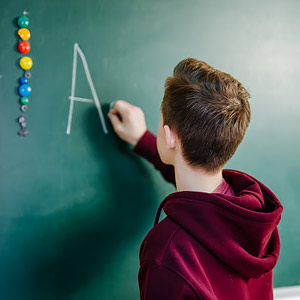Алгоритм описания художественной картины
1. Определяется жанр картины.
2. Необходимо назвать автора произведения и, если известно, то дать какую-то информацию о художнике.
3. Характеристика картины.
4. Описание картины.
4.1. Цвет
4.2. Структура
4.3. Общее описание
5. Углубляясь в детали.
6. Делая предположения.
7. Выражая впечатления
1. Жанр картины
-
the portrait – портрет;
-
the landscape (seascape, townscape) – пейзаж (морской пейзаж, городской пейзаж);
-
the still life – натюрморт;
-
the genre scene – жанровая сцена;
-
the historical / mythological painting – историческая / мифологическая живопись
2. Автор картины и информация о нем
-
To begin with, this painting is a portrait which belongs to the brush of … (the name of the painter)
-
This artist lived in the ……century and worked in the style known as Classicism, Romanticism, Realism, Impressionism, Surrealism, Cubism, Expressionism, Abstract Art
3. Характеристика картины. Полезные прилагательные
lifelike = true to life – правдоподобный
dreamlike = work of imagination – мифический, сказочный
confusing – сбивающий с толку
colourful – красочный, яркий
romantic – романтичный; романтический
lyrical – лирический
powerful – яркий
outstanding – выдающийся; знаменитый
heart-breaking – огорчительный; разрывающий сердце; вызывающий скорбь
impressive – впечатляющий, выразительный, производящий глубокое впечатление
To my mind, it is a … picture, which shows (….say what you see)
4. Описание картины
4.1. Цвет
-
Colours can be: warm / cold, bold, oppressive, bright, deep, light, soft and delicate.
-
The picture is painted in …… colours. These colours contrast very well.
-
The dominating colours are ….
-
The colours contrast with each other.
4.2. Структура
The space of the picture is symmetrically / asymmetrically divided.
4.3. Общее описание
-
In the centre / middle of the painting we can see a ….
-
In the foreground there is a….
-
In the background there are….
-
In the far distance we can make out the outline of a…
-
On the left / right
5. Углубляясь детали
-
At first glance, it looks strange / confusing/ depressing/ …
-
But if you look closely, you can see…
-
It looks like ….
-
The artists managed to capture the sitter’s impression / the atmosphere of a….. / the mood of the moment, etc.
6. Делая предположения
7. Выражая впечатления
-
Well, I feel that I am unable to put into words what I feel looking at the painting.
-
To my mind, it is a masterpiece that could stand the test of time.
-
Well, it seems to me that I couldn’t put into words the impression made on me by this painting.
-
I feel extremely impressed by this painting.
-
It is brilliant, amazing. It is a real masterpiece by (….. the name of the painter).
Используемые грамматические конструкции
-
Present Continuous;
-
there is/there are/ there stands/ sits/ lies/ (конструкции местонахождения);
-
модальные глаголы can, could, may, might в значении предположения
(a flying seagull — летящая чайка,
a fallen tree — упавшее дерево);
a woman wearing a white dress
a man dressed as a monk;
who, which, whose и др.
(относительные местоимения и придаточные определительные предложения)
I see a girl who is running around her mother.
I brought home the shell which I had found on the beach.
I see a dog whose master is reading a newspaper.
Пример
To begin with, it is necessary to mention that this work of art is called “The Mona Lisa (La Gioconda)”. This painting is a portrait which belongs to the brush of Leonardo da Vinci, a prominent Italian master. The artist lived in the 15th-16th centuries and painted his masterpiece in the style known as Renaissance portrait art in 1503-06. It is known that the painting is housed in the Louvre, Paris and is valued in excess of $1 billion.
Leonardo da Vinci created “The Mona Lisa” in oil. The work is painted in pale and soft colours. And it is impossible to notice the transition from one colour to another.
In the foreground we can see a young woman who is sitting upright and sideways in a chair, with her face and chest turned slightly towards the viewer. Her left arm is lying comfortably on the armrest of the chair and is clasped by the hand of her right arm which crosses her front. The slightly protective position of her arms seems to create a sense of distance between a sitter and a spectator.
In the background the landscape looks like vanishing. But if we look closely, we can see the rocky horizon on the right and the flat lands on the left. This imbalance adds a kind of unreal atmosphere of the painting.
Another slightly surreal feature of “the Mona Lisa” is her lack of eyebrows and eyelashes.
Well, I feel that I am unable to put into words what I feel looking at the painting.
The portrait can’t but create mysterious features: the heroin’s enigmatic half-smile; her gaze, which is directed to the right of the viewer; her hands which have a slightly unreal, lifeless quality as if they belonged to a different body. To my mind, it is a masterpiece that could stand the test of time and will have a definite air of mystery forever.
To finish my description I want to say that “The Mona Lisa” has become an unmistakable icon of Western culture.
Необходимые предлоги
Запомните!
-
• in the sky — на небе
-
• in the rain — под дождем
-
• in the sun — под солнцем (в солнечном свете)
-
• in the picture — на картине
-
• in the photo — на фотографии
-
in — в (внутри)
-
There are a lot of birds in the tree. — На дереве много птиц.
Запомните!
-
Говоря о плодах и листьях, надо употреблять предлог ON:
-
There are a lot of leaves on the tree. — На дереве много листьев.

























